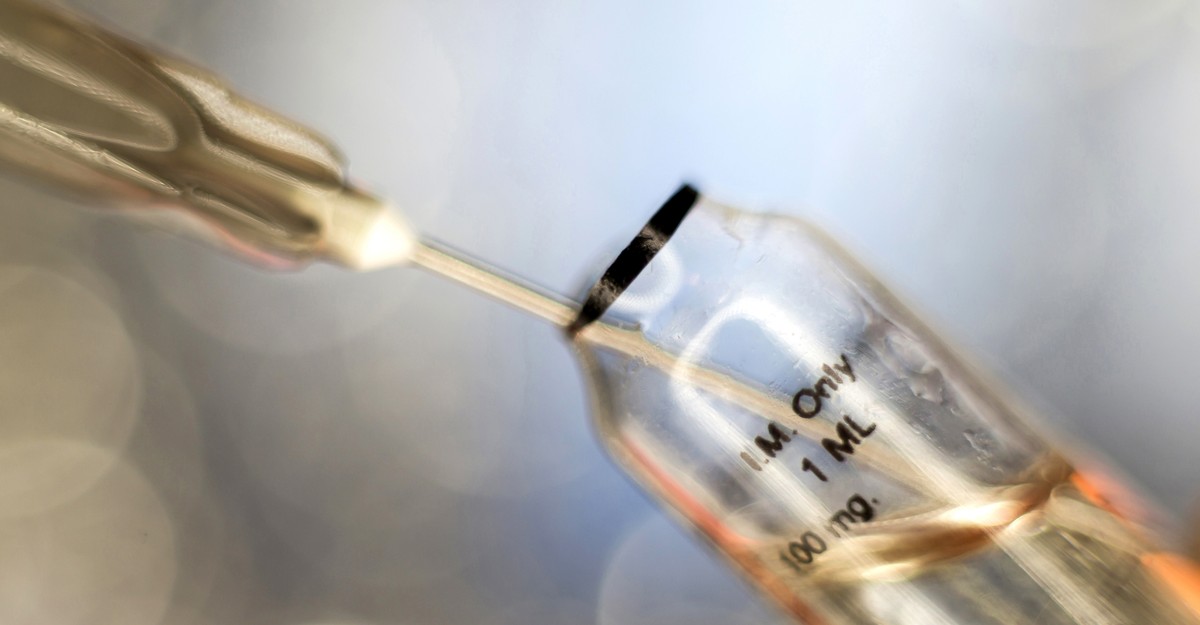- Joined
- Nov 21, 1998
- Messages
- 12,547
- Reaction score
- 6,931
Is it finally time for pain doctors to admit that we're at the end of the corticosteroid era in pain management?? Next up polymethyl methacrylate.
Is it finally time for pain doctors to admit that we're at the end of the corticosteroid era in pain management?? Next up polymethyl methacrylate.
I had no idea distal vessel embolization for joint pain existed !!
I agree with what they're saying as the agents are often off label, ineffective, and systemically if not locally harmful in a lot of states where we use them, but I suspect this is part of their push towards distal vessel embolization for joint pain rather than ablation/steroids.
I just talked to several ortho guys in their late 50s and early 60s. They have done 1000's of injections into the knees shoulders etc. they state they will continue to do it as they feel it is beneficial and the risks are overstated in that article. one guy told me he does around 15-20 various steroid injections a day for 30 years and sees no problem with it
I just talked to several ortho guys in their late 50s and early 60s. They have done 1000's of injections into the knees shoulders etc. they state they will continue to do it as they feel it is beneficial and the risks are overstated in that article. one guy told me he does around 15-20 various steroid injections a day for 30 years and sees no problem with it

A review or reviews by Radiologists.
GIGO.
It's not new news that steroids are a horrible choice.Is it finally time for pain doctors to admit that we're at the end of the corticosteroid era in pain management?? Next up polymethyl methacrylate.
Intra-articular steroid injections and total knee arthroplasty are not going away. You can tell grandma to suck it up and get a cane but that is not the American thing to do. You can say your magic beans and voodoo stem cells with PRP are the answer but the literature does not yet there this out. Maybe if we stop treating orthopedic surgeons we would illuminate all knee surgeries in the future. Yeah that’s the ticket
Is it finally time for pain doctors to admit that we're at the end of the corticosteroid era in pain management?? Next up polymethyl methacrylate.
Isn't this an example of correlation does not equal causation? Perhaps those who received steroid injections had more severe pain, inflammation and arthritis thus leading them to be more likely to require corticosteroids and ultimately surgery for adequate pain relief. No?I took a lot flack last year by predicting an end to the corticosteroid era...
Bone Joint J. 2020 May;102-B(5):586-592. doi: 10.1302/0301-620X.102B5.BJJ-2019-1376.R1.
Intra-articular Corticosteroid Injections Increase the Risk of Requiring Knee Arthroplasty
Stan R W Wijn 1, Maroeska M Rovers 1 2, Tony G van Tienen 3 4, Gerjon Hannink 1
Affiliations expand
PMID: 32349592 DOI: 10.1302/0301-620X.102B5.BJJ-2019-1376.R1
Abstract
Aims: Recent studies have suggested that corticosteroid injections into the knee may harm the joint resulting in cartilage loss and possibly accelerating the progression of osteoarthritis (OA). The aim of this study was to assess whether patients with, or at risk of developing, symptomatic osteoarthritis of the knee who receive intra-articular corticosteroid injections have an increased risk of requiring arthroplasty.
Methods: We used data from the Osteoarthritis Initiative (OAI), a multicentre observational cohort study that followed 4,796 patients with, or at risk of developing, osteoarthritis of the knee on an annual basis with follow-up available up to nine years. Increased risk for symptomatic OA was defined as frequent knee symptoms (pain, aching, or stiffness) without radiological evidence of OA and two or more risk factors, while OA was defined by the presence of both femoral osteophytes and frequent symptoms in one or both knees. Missing data were imputed with multiple imputations using chained equations. Time-dependent propensity score matching was performed to match patients at the time of receving their first injection with controls. The effect of corticosteroid injections on the rate of subsequent (total and partial) knee arthroplasty was estimated using Cox proportional-hazards survival analyses.
Results: After removing patients lost to follow-up, 3,822 patients remained in the study. A total of 249 (31.3%) of the 796 patients who received corticosteroid injections, and 152 (5.0%) of the 3,026 who did not, had knee arthroplasty. In the matched cohort, Cox proportional-hazards regression resulted in a hazard ratio of 1.57 (95% confidence interval (CI) 1.37 to 1.81; p < 0.001) and each injection increased the absolute risk of arthroplasty by 9.4% at nine years' follow-up compared with those who did not receive injections.
Conclusion: Corticosteroid injections seem to be associated with an increased risk of knee arthroplasty in patients with, or at risk of developing, symptomatic OA of the knee. These findings suggest that a conservative approach regarding the treatment of these patients with corticosteroid injections should be recommended. Cite this article: Bone Joint J 2020;102-B(5):586-592.
Keywords: Corticosteroid injection; Intra-articular injection; Osteoarthritis; Osteoarthritis initiative; Total knee arthroplasty.
Perhaps even more broadly than that - those who sought more medical care got it. Would be interesting to compare rates of TKA in those who got PRP vs no injections. Not saying there aren’t issues with steroids - basic science demonstrates toxicity, but this study doesn’t do much to move the needle.Isn't this an example of correlation does not equal causation? Perhaps those who received steroid injections had more severe pain, inflammation and arthritis thus leading them to be more likely to require corticosteroids and ultimately surgery for adequate pain relief. No?
Intra-articular steroid injections and total knee arthroplasty are not going away. You can tell grandma to suck it up and get a cane but that is not the American thing to do. You can say your magic beans and voodoo stem cells with PRP are the answer but the literature does not yet there this out. Maybe if we stop treating orthopedic surgeons we would illuminate all knee surgeries in the future. Yeah that’s the ticket


Steroid Shot Side Effects: Steroid Injections are BAD NEWS - Regenexx
Steroid shot side effects are very real and problematic. Dr. Centeno reviews the issues with steroid shots and discusses alternatives.regenexx.com
"The new research on knees is also not good for patients who get steroid shots. In this study, the authors looked at almost four thousand patients who were part of a government-funded arthritis study (15). Each steroid shot in the knee increased the likelihood of needing a knee replacement by 9%. Meaning if you got 4 steroid shots to help arthritis pain, this increased the likelihood that you needed a knee replacement by about 36%!"
@Ducttape
1. observational cohort study...RESULTS:
After removing patients lost to follow-up, 3,822 patients remained in the study. A total of 249 (31.3%) of the 796 patients who received corticosteroid injections, and 152 (5.0%) of the 3,026 who did not, had knee arthroplasty. In the matched cohort, Cox proportional-hazards regression resulted in a hazard ratio of 1.57 (95% confidence interval (CI) 1.37 to 1.81; p < 0.001) and each injection increased the absolute risk of arthroplasty by 9.4% at nine years' follow-up compared with those who did not receive injections.
Those who received injections had, in general, higher pain scores and lower functional scores compared with those who did not receive injections. We used tdPSM to create matches of patients at the time of their first injection, instead of regular propensity score matching that achieves a covariate balance at baseline.16,24 This resulted in comparable patients at the time of treatment, eliminating changes that occurred between their inclusion at the start of the study and their first injection. Thus, a patient who reported their first injection at the fifth follow-up visit might have a lower functional score compared with a control whose function was similar at baseline.
How many Thousands of Steroid Injections do you think Dr. Centeno gave before determining that Steroids are " BAD NEWS"?
or alternativelyIt's never too late to admit when you were wrong...
Graph shows Depomedrol +Bup was lower chondrotoxicity than dexamethasone or kenalog with bup; also depomedrol + bup lower than just bup
Interesting post, thanks for the article. The differences among steroid shown besides betamethasone are insignificant though.
Attached an article that suggests bupivacaine > lidocaine > ropivacaine (least) for chondrotoxicity. Betamethasone appears the worst steroid of the group.
We don't have ropivacaine readily available but may look into more now.
Interesting post, thanks for the article. The differences among steroid shown besides betamethasone are insignificant though.
Attached an article that suggests bupivacaine > lidocaine > ropivacaine (least) for chondrotoxicity. Betamethasone appears the worst steroid of the group.
We don't have ropivacaine readily available but may look into more now.
Dose related response is clear; take away appears don't use 0.5% bupivacaine but 0.25% does not significantly affect cell viability for some of the studies included in the article, don't use continues intraarticulater infusions of any locals. Still meta-analysis, so lot of variability in the studies here
From your article
- With regard to bupivacaine, they found that 0.25% bupivacaine did not affect cell viability at the time points analyzed up to 120 hours; however, 0.5% bupivacaine caused a detectable but not significant decrease in cell viability at 24 hours, and was found to have significant (P < .05)
- Breu et al exposed human articular chondrocytes to varying concentrations of bupivacaine, ropivacaine, mepivacaine, and buffered saline controls for 1 hour.18 They found that 0.5% bupivacaine caused a significant increase in apoptotic and necrotic cells and cell viability in a dose-dependent concentration after 24 hours and after 96 hours when compared with buffer saline controls (P < .01), but not with lesser concentrations 0.25%, 0.125%, 0.063%, and 0.031% of bupivacaine.18
- Given the varying concentrations of anesthetics involved, no one particular anesthetic seemed to be more significantly cytotoxic than the others. (levobupivicaine, bupivicaine, ropivicaine)
- Finally, the true duration of contact from a single local anesthetic injection into a peripheral joint in vivo is not clear.
Interesting post, thanks for the article. The differences among steroid shown besides betamethasone are insignificant though.
Attached an article that suggests bupivacaine > lidocaine > ropivacaine (least) for chondrotoxicity. Betamethasone appears the worst steroid of the group.
We don't have ropivacaine readily available but may look into more now.
Putting local into a joint adds nothing IMO, and significantly increases chondrotoxicity. Just don't do it.
i disagree.....i add diluted lidocaine....it's another small indicator confirming the pain generator. For extra-articular pathology, an IA knee injection doesnt make the patient smile when they get off the table because their pain is gone.
Saline and Kool-aid would have the same effect.
I worded my post above wrong. But hopefully you get the gist of it. If I use lido and the pain is still there, I learned something.
more neuromodulation techniques!!! yay, I'm just a resident applying to pain and am not sure if insurance companies deny modulation techniques (like RFA of genicular nerves, etc) but would this help push for these with less long term joint damage?Is it finally time for pain doctors to admit that we're at the end of the corticosteroid era in pain management?? Next up polymethyl methacrylate.
more neuromodulation techniques!!! yay, I'm just a resident applying to pain and am not sure if insurance companies deny modulation techniques (like RFA of genicular nerves, etc) but would this help push for these with less long term joint damage?
denervating a joint isnt the best way to preserve a joint. IE: charcot joint
Ever seen this?
